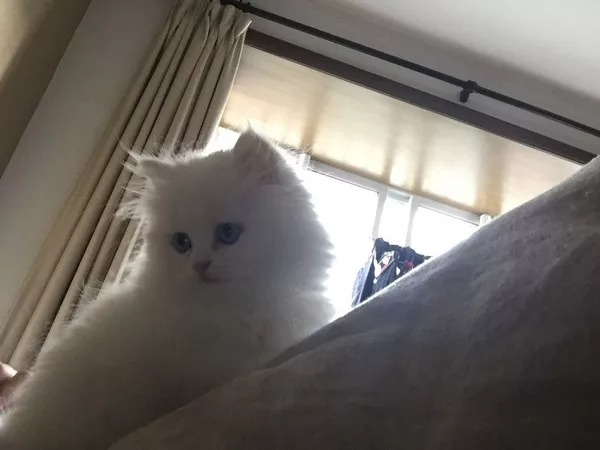Cats have long been associated with mystery and nocturnal prowling. Their ability to navigate through the darkness with apparent ease has led to the popular belief that cats can see in the dark. But is this really the case, or is it just another feline myth? In this comprehensive exploration, we’ll delve into the world of cat vision, shedding light on their remarkable night vision capabilities and unraveling the science behind their mysterious eyes.
Understanding Cat Vision:
To understand whether cats can see in the dark, we first need to grasp the basics of how their vision works. Cats, like humans and many other animals, have eyes that contain photoreceptor cells called rods and cones. Cones are responsible for color vision and function best in bright light, while rods are more sensitive to low light conditions and play a crucial role in night vision.
Night Vision Adaptations:
Cats are crepuscular animals, which means they are most active during dawn and dusk when light levels are low. Evolution has equipped them with some remarkable adaptations that enhance their night vision:
Tapetum Lucidum: One of the most significant contributors to a cat’s night vision is the tapetum lucidum, a layer of cells located behind the retina. This layer reflects light that passes through the retina back into the eye, giving it a second chance to be detected by the photoreceptor cells. This reflection amplifies the available light and enhances a cat’s ability to see in low-light conditions.
Pupil Size: Cats have vertically slit-shaped pupils that can expand widely in low light and contract to a tiny slit in bright light. In dim conditions, the enlarged pupils allow more light to enter the eye, further aiding night vision.
Rods Dominance: Cats have a higher ratio of rods to cones in their retinas compared to humans. This rod dominance enhances their sensitivity to low light levels but comes at the cost of color discrimination.
Adapted Retina: The structure of a cat’s retina is adapted for low light conditions. It contains a higher concentration of rod cells, which are more light-sensitive, enabling cats to detect even small amounts of light.
Motion Detection: Cats excel at detecting motion in low light, which is a crucial skill for hunting prey in the wild. Their eyes are finely tuned to pick up the slightest movements, making them formidable hunters during the twilight hours.
How Cats See in Low Light:
While cats can’t see in absolute darkness, their night vision is impressive, allowing them to perceive objects and navigate in light levels as low as one-sixth of what a human needs. They can achieve this due to the combination of adaptations mentioned above. When a cat’s surroundings are dimly lit, here’s what happens:
Tapetum Lucidum: The tapetum lucidum reflects any available light back through the photoreceptor cells, essentially giving the retina a second chance to detect it. This reflection creates the eerie glow often seen in cats’ eyes at night.
Pupil Dilation: The pupils dilate, enlarging to capture as much light as possible. This is why a cat’s eyes may appear fully black in low light, as the pupils expand to cover most of the visible eye.
Enhanced Sensitivity: The abundance of rod cells in the retina allows cats to detect even the faintest of light. While they sacrifice color vision in the process, their ability to discern shapes and movements in dim conditions is remarkable.
Limitations of Cat Night Vision:
While cats have exceptional night vision, it’s not without limitations:
Color Blindness: Cats have limited color vision, primarily seeing the world in shades of blue and green. Red and orange hues appear as varying shades of gray to them.
Blind Spots: Cats have a small blind spot in front of their nose and a larger one directly behind them. This is why they might not react to an object or prey right under their nose.
Sudden Bright Light: Cats may be momentarily blinded by sudden exposure to bright light after being in the dark. Their pupils take time to constrict, making them vulnerable during this adjustment period.
Myths About Cat Night Vision:
There are several myths surrounding cat night vision that need debunking:
Complete Darkness: Cats cannot see in total darkness. They still require some minimal light to see their surroundings.
Infrared Vision: Contrary to popular belief, cats do not have infrared vision that allows them to see heat signatures like some predators. Their night vision is primarily based on visible light.
Conclusion:
While cats cannot see in absolute darkness, their night vision is nothing short of remarkable. Their eyes are finely tuned to detect even the slightest glimmer of light, and their adaptations, including the tapetum lucidum and specialized retinal structure, make them superb hunters during low-light conditions. So, the next time your cat effortlessly navigates a dark room, you can appreciate the incredible nocturnal adaptations that enable their fascinating night vision.

























